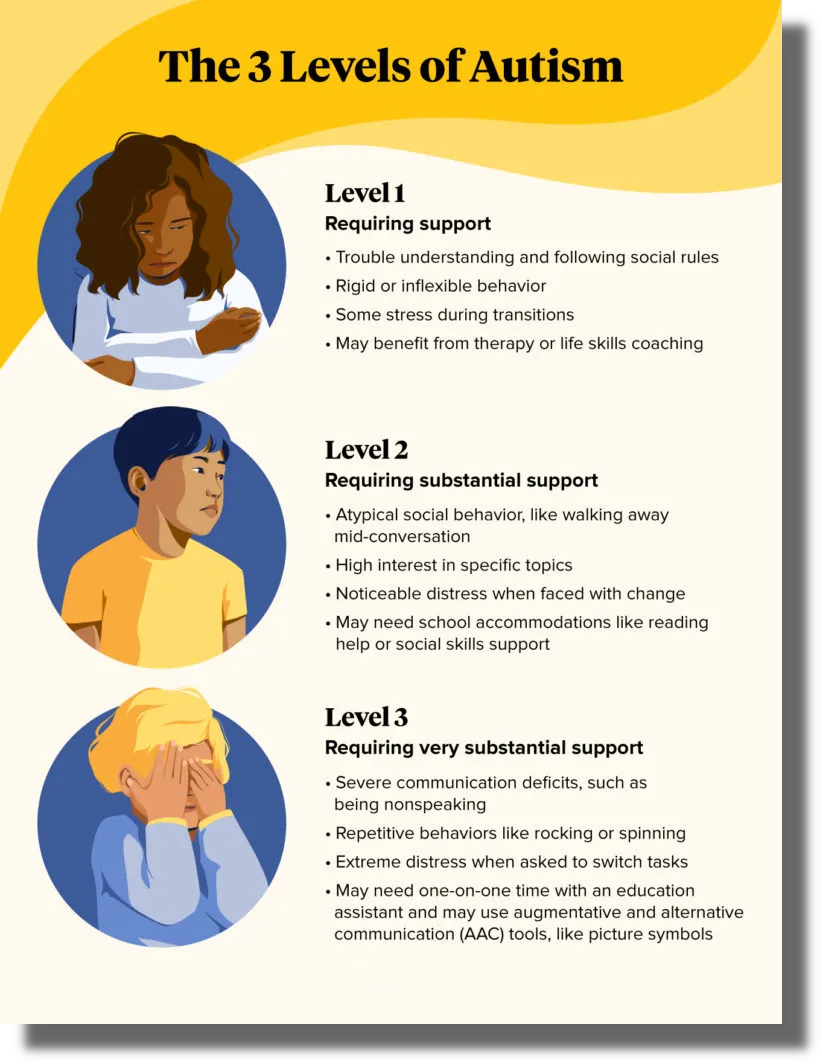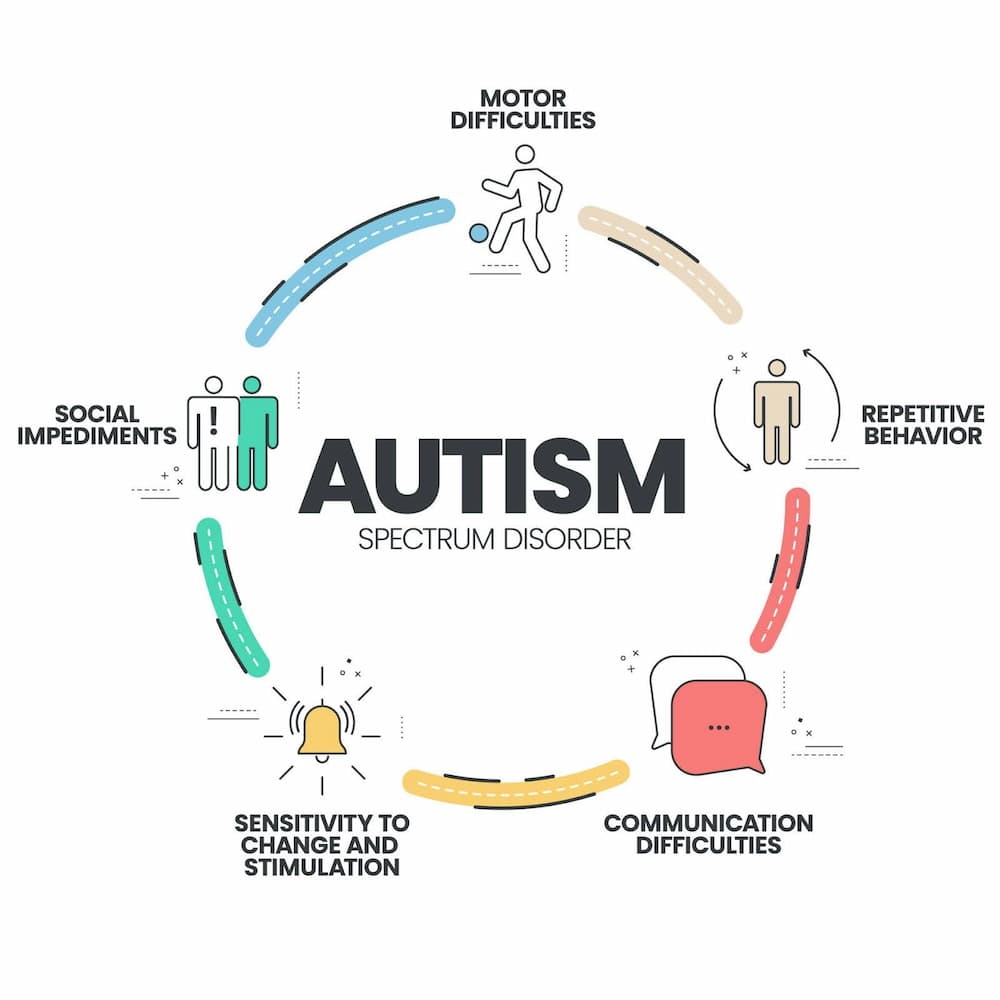Comprehending the Impact of Behavioral Autism on Day-to-day Live and Social Interactions
You might not understand exactly how deeply behavior autism influences day-to-day live and social interactions. People on the range frequently browse a globe full of communication obstacles and sensory overload. These difficulties can result in disappointment and seclusion, impacting their connections and general well-being. Comprehending these nuances is crucial for promoting encouraging atmospheres. What strategies can we execute to create even more significant links and comprehensive spaces? The responses may amaze you.
Specifying Behavior Autism and Its Features
Behavioral autism, often referred to as autism spectrum disorder (ASD), encompasses a series of problems defined by obstacles in social communication, interaction, and repeated actions. You could notice that individuals with ASD frequently struggle to interpret social signs, which can bring about misconceptions in conversations. They may discover it tough to develop eye get in touch with or take part in tiny talk, making social circumstances really feel overwhelming.
Communication troubles can manifest in different ways, from delayed speech development to a choice for making use of fewer words. Recurring actions, such as hand-flapping or rocking, can act as coping mechanisms to take care of tension or sensory overload. These characteristics can profoundly influence daily life, making it vital for you to recognize and support those with ASD. By acknowledging these attributes, you can promote an environment that promotes approval and urges effective interaction, aiding individuals with autism grow in their daily communications.
The Range of Autism: Comprehending Variability in Behavior
Autism range disorder (ASD) isn't a one-size-fits-all diagnosis; it varies widely among individuals. You could observe that some individuals with ASD exhibit moderate signs and symptoms, while others might face much more substantial challenges. This variability can materialize in actions, passions, and sensory sensitivities. You may come across individuals that are very verbal and involve easily in discussions, while others may favor solitary tasks or connect non-verbally.
Furthermore, the means individuals with ASD react to sensory input can vary substantially; some may be overwhelmed by loud noises or intense lights, whereas others flourish in stimulating settings. The range also consists of distinctions in social interactions; some individuals may struggle to analyze social signs, while others navigate social setups with relative convenience. Recognizing this variability is important, as it helps you value each person's one-of-a-kind experience and tailor support to their specific demands, promoting a much more comprehensive environment for every person.
Communication Challenges Dealt With by People With Autism
When you communicate with people on the autism spectrum, you might notice their one-of-a-kind communication difficulties. They commonly encounter troubles with both nonverbal and verbal hints, which can affect their social interactions. Understanding these obstacles is vital for cultivating far better connections and assistance.

Verbal Interaction Difficulties
Many individuals on the autism spectrum experience verbal interaction troubles that can substantially impact their everyday communications. Your tone, volume, or speed could not line up with social assumptions, creating others to misunderstand your intentions. Identifying these difficulties can assist you and your assistance network develop methods to improve interaction and cultivate better connections with others in your everyday life.
Nonverbal Interaction Obstacles
Spoken communication isn't the only challenge people on the autism range face; nonverbal communication obstacles can be equally as significant. You may find it tough to interpret body language, face expressions, and eye call, which are necessary for effective communication. These challenges can bring about misconceptions or misconceptions of social cues, making interactions really feel frustrating or complex. You may battle to reveal your very own emotions via nonverbal ways, leaving others unclear of your purposes or feelings. This separate can create sensations of isolation and frustration. Acknowledging these barriers is critical for promoting understanding and compassion in your communications. By attending to nonverbal communication, you can locate techniques to improve your social experiences and improve your total high quality of life.
Social Interaction Impacts
Social interactions can often feel overwhelming because of the one-of-a-kind interaction difficulties encountered by people with autism. You may battle with interpreting social signs, making it difficult to comprehend mockery or body movement. This can lead to misunderstandings or uncomfortable moments in discussions. Additionally, initiating and maintaining discussions may feel challenging, causing stress and anxiety in social situations. You might prefer organized environments, making spontaneous communications awkward. It's additionally usual to experience trouble in involving in little talk, which can impede developing new relationships. Acknowledging these obstacles can assist you discover approaches to enhance communication, such as exercising social skills in risk-free settings or making use of visual help - Autism Therapist. Comprehending your demands allows you to browse social interactions with greater self-confidence and simplicity.
Social Interaction and Connection Building in Autism
While structure connections can be testing for people with autism, comprehending their special viewpoints and interaction styles can foster purposeful links. You might observe that several individuals on the range like direct communication and may battle with social cues or little talk. By being uncomplicated in your communications, you can assist develop a setting where they feel comfortable.
Engaging in shared passions can additionally offer as a bridge to much deeper links. Whether it's a hobby, a favored show, or a mutual passion, these typical threads can open up doors to friendship.
Every Day Life Regimen: Browsing Approaches and obstacles
Maneuvering day-to-day life regimens can be especially challenging for people with autism, specifically when unanticipated modifications happen. To navigate these obstacles, think about executing visual timetables or checklists.
Establishing a regimen that includes sensory breaks can also be useful. This helps create an understanding atmosphere.
Lastly, method mindfulness methods to manage stress and anxiety and anxiousness. Easy breathing workouts or grounding strategies can make a considerable distinction. By including these approaches, you can boost your day-to-day regimen and reduce disturbances, making life feel extra convenient.
Strengths and Capabilities of People on the Autism Spectrum
Comprehending day-to-day live regimens is just one facet of the autism experience. Numerous people on the autism range have Get More Information remarkable staminas and capacities that establish them apart. You might locate that your attention to detail is outstanding, enabling you to succeed informative post in jobs that need accuracy and emphasis. Your capacity to assume outside the box can cause innovative options in numerous situations.
Additionally, your memory abilities frequently radiate, specifically in areas of rate of interest. Aba Therapist Near Me. This propensity for preserving information can make you an important source in areas like art, innovation, or science. You may likewise show solid visual thinking, enabling you to envision complicated principles and resolve problems creatively
Additionally, your unique perspective on the world can foster compassion and understanding in others, enriching social interactions. Accepting these toughness not only improves your self-confidence but additionally assists others appreciate the varied skills you offer the table.
Creating Inclusive Environments for Individuals With Autism
Creating comprehensive atmospheres for individuals with autism starts with designing sensory-friendly spaces that satisfy their distinct requirements. You can likewise cultivate opportunities for social interaction, assisting to construct friendships and links. By making these adjustments, you'll add to a more welcoming environment for everybody.
Designing Sensory-Friendly Spaces
While designing sensory-friendly spaces, it's vital to review the one-of-a-kind requirements of people with autism. Beginning by selecting soothing shades and soft illumination to develop a calming atmosphere. When bewildered, include peaceful areas where individuals can charge and pull away. You'll wish to reduce loud sounds and distractions, using soundproof materials or white sound machines to assist keep tranquility. Take into consideration tactile components like soft fabrics or fidget-friendly items that can give convenience. Identify that spaces are adaptable, enabling for simple reformation to accommodate different tasks. Finally, include aesthetic schedules or clear signage to help people browse the room confidently. By thoughtfully incorporating these components, you can produce an inviting atmosphere that sustains sensory requirements and advertises general health.
Promoting Social Interaction Opportunities
Designing sensory-friendly rooms not just addresses specific convenience however likewise sets the phase for significant social interactions amongst individuals with autism. To promote these interactions, create inclusive settings that invite involvement. Arrange organized tasks, like art courses her explanation or team games, that motivate collaboration without frustrating sensory input. Usage visual aids and clear interaction to help every person involve conveniently. Urge peer mentoring, pairing people with autism with encouraging peers who can lead them with social situations. In addition, consider holding normal area occasions that commemorate neurodiversity, cultivating approval and understanding among all participants. By applying these approaches, you can improve social opportunities, assisting people with autism develop friendships and strengthen their social skills in a secure, welcoming setting.

Regularly Asked Questions
Exactly How Can Pals Support Somebody With Behavioral Autism?
You can sustain a friend with behavioral autism by holding your horses, listening proactively, and valuing their borders. Involve in activities they take pleasure in, connect honestly, and develop a comfy setting where they really feel valued and recognized.
What Resources Are Readily Available for Parents of Children With Autism?
You can discover numerous resources for parents of children with autism, consisting of assistance groups, educational internet sites, and regional social work. Getting in touch with other parents can additionally give useful understandings and shared experiences to aid navigate obstacles.
Can Behavioral Autism Change Gradually?

Yes, behavioral autism can transform in time. You may notice shifts in interaction, social skills, and behavior as your child expands. Early treatment and support commonly play essential duties in these developmental changes.
How Do Sensory Level Of Sensitivities Affect Day-to-day Live?
Sensory sensitivities can make daily experiences frustrating. You might fight with loud sounds or intense lights, bring about anxiety or avoidance. Discovering settings that accommodate your demands can significantly boost your comfort and total every day life.
What Prevail Misconceptions Regarding Behavioral Autism?
You could believe behavioral autism just affects interaction abilities, but it's even more complicated. Several assume people do not have compassion or knowledge, which isn't true. Recognizing these misunderstandings assists foster approval and support for those on the range.
Behavioral autism, typically referred to as autism range disorder (ASD), includes a range of conditions defined by challenges in social communication, communication, and repeated actions.Social communications can usually feel overwhelming due to the unique communication difficulties dealt with by people with autism.Creating sensory-friendly areas not only addresses individual comfort but likewise sets the stage for meaningful social interactions among people with autism. Encourage peer mentoring, matching individuals with autism with supportive peers that can lead them through social scenarios. By implementing these methods, you can improve social chances, assisting people with autism construct relationships and enhance their social abilities in a secure, welcoming environment.